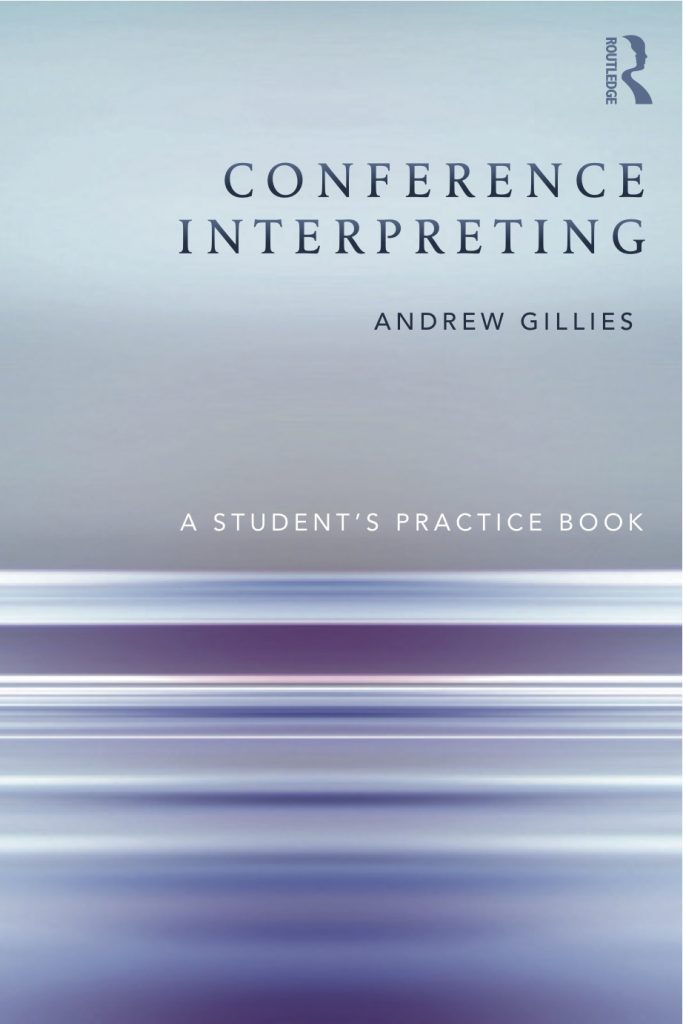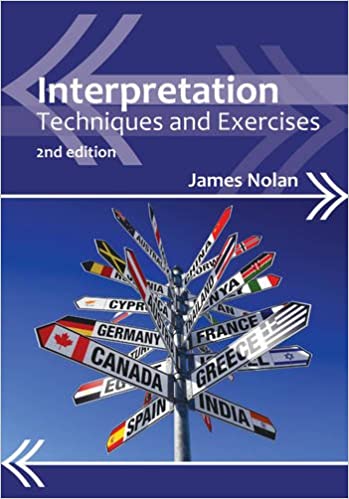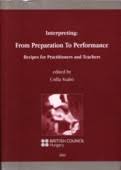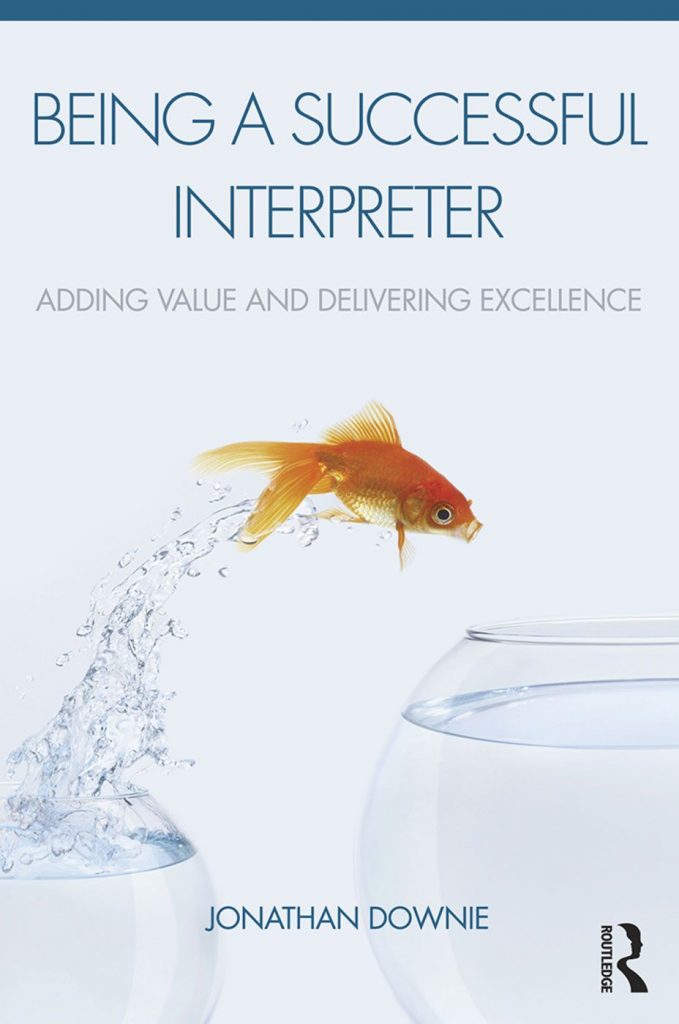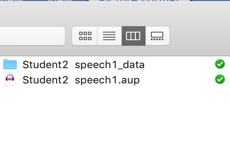by Chris Guichot de Fortis
Senior Interpreter, NATO
January 2015
“You have a mind, it wants to learn. Acquire an arsenal of knowledge with which to arm yourself…our modern age is a time when learning is power….every man must know everything. Ignorance is the curse of God, knowledge the wing we use to fly…your brain must hurry to eat all the facts it can hold, before the next age of darkness.”
(Phillip Depoy – “The King James Conspiracy”)
It has become increasingly apparent to me over the years that a considerable number of students studying conference interpreting (at Master’s and other levels), find it difficult to know exactly how to proceed, and which tactics and techniques to adopt in their efforts to improve their consecutive and simultaneous techniques, and strengthen both their ‘A’ and ‘B’ languages. So, I felt it might be useful for me to provide a few hints and guidelines to help my future colleagues, which is my goal in this informal (and far from exhaustive) guide; I hope and trust that it will be of assistance both to those still engaged in their studies, and recently qualified young conference interpreters.
If you are to progress, it is important that you understand that the formal hours of teaching and training offered by your school during your interpreting studies can only be considered as simply the tiny tip of what is a complex and extensive iceberg. If you limit yourself to this ‘official’ training and practice, be advised from the start that you will have practically no chance either of passing your diploma exams or (much more importantly) of actually becoming a conference interpreter! Please divest yourself immediately of the misapprehension that simply attending classes will automatically make you into a conference interpreter – from today on, devote your energy, your willpower and your imagination to external/supplementary/independent training activities aimed at making you both competent and autonomous.
Think of your formal classes more as a chance to have regular access to experienced trainers, who will be able to observe your performance and provide advice to enable you to then go away and progress. Remember that even though Olympic athletes (and theirs, linguistically, is the level of difficulty and excellence in performance at which you are aiming) resort systematically to specialist professional trainers, these experts can only observe performance and indicate what form the athlete’s training should take. It will be the individual athlete’s muscles and tendons which will bring Olympic success, and not those of the coach – it is therefore up to the athlete to make the lengthy, focused, sustained and considered efforts which will progressively strengthen and develop muscles, resilience and technique, and lead to success in performance.
In your case, it is your own brain that you must painstakingly develop, nourishing synapses and creating the new neuronal pathways which are a prerequisite for simultaneous interpretation, and to which there are no shortcuts: there can literally be no substitute for many many hours of purposeful and targeted practice, actually carrying out the interpreting task! You may practice alone or in a group, and must regularly seek evaluations and advice from seasoned professional interpreters/pedagogues, who know where the bar is set. This professional feedback should lead to the adoption of strategies to remedy any faults identified, and this practice/feedback loop should be repeated many times.
It is usually said that, to acquire a high-level specialist skill, some 10.000 hours of deliberate practice are required. While this will indeed be necessary for you to achieve a truly expert level of performance (which should legitimately be your aim after a couple of years in the profession, if you wish to make a living from conference interpreting in a competitive world), to reach the level required to actually launch one’s career, several hundred hours (in conditions as near to those of real life as possible) should suffice!
During your practice sessions, I suggest that you draw inspiration from the text in Annex I below, detailing the training methods and strategies employed by experts and specialist performers in a variety of fields.
It is very important that you practice even a little every day (while allowing yourself a weekly day of rest!), rather than opting for less frequent but rarer but longer, intensive bursts of activity. On days when you have classes, I recommend a daily average of 90 minutes’ concentrated training, in two 45 minute slices, all disciplines included; on those days when you have no formal interpreting classes, you should at least double this amount of time. Work also at acquiring the conference interpreter’s essential skill of ‘throwing the switch’ and being able to concentrate immediately and totally on the task at hand, while relaxing just as fully when the time is right. This ability (a skill in its own right), is so frequently disregarded and/or misunderstood, but it will be the basic key to the success of your training and practice, and later to your life as a practicing professional conference interpreter.
You will find below a short list of exercises which I hope and believe will help you develop as a conference interpreter. I should add the rider that each person, each brain and each linguistic and professional profile is different – you should therefore put together a reasoned, rational and achievable study and training plan to suit your own abilities and circumstances, and stick to it even when the going gets tough (as will often be the case, trust me!). If you would like to consult me (c.guichot@aiic.net) for help in establishing a tailor-made personal training plan, I would be very happy to help if time permits:
1) Listen every day, for at least an hour, to spoken-word radio (NPR, BBC Radio 4 and World Service, for English), at times with complete focus and concentration and at times as a background to your routine activities. Whether you are an English ‘A’ or ‘B’, the advantages here are multiple:
- – during the ‘concentrated’ listening periods, you will improve your grasp of current affairs and geopolitics, and enhance the lexical breadth and depth of your language
- – at all times, in the absence of visual cues, your ears and brain will become accustomed to instinctively and rapidly seizing the meaning and cadences of the (‘C’ or ‘B’) language, and to honing active listening skills
- – in listening to radio speech while engaged in other relatively undemanding activities, you will train your brain to listen and extract meaning with only a part of its capacity; this is an absolute goal to be reached in simultaneous interpreting, where the brain must be free to concentrate on the more ‘noble’ core functions of interpretation, i.e. understanding, processing and transposing complex ideas.
2) Practice simultaneous, using real-life speeches delivered by speakers who are making no concessions to the fact that you are interpreting them, and pulling no punches! Use headphones and a computer, record your work and check it afterwards; as often as possible, ask for feedback from an experienced interpreter with the relevant ‘A’ language (if need be, arrange to send sound files by email). I hope that the list of useful links in Annex II will help you here.
3) Form a training and practice group with other students or young colleagues,: negotiate access to a room with interpreting booths (use imagination and lateral thinking, and do not take ‘no’ for an answer!) and organize regular and frequent training sessions. Attend these sessions come what may, even when tired or discouraged, as they will be a source of motivation and cross-fertilisation; while the learning curve is still steep, it is easier to struggle with others than alone. You should attend these sessions systematically, no matter how (or how confident) you are feeling mentally or physically, because others will be depending on you and your commitment. The discipline will later stand you in good stead as a professional interpreter, and will help develop your character and reliability, making you a sought- after colleague.
In your work with the practice group, every member in rotation should prepare and deliver speeches, which will also develop your self-confidence and hone other communication skills that will help you greatly in consecutive and simultaneous interpretation. While working in a group, be constructive in your feedback to colleagues, but also frank and demanding. Undemanding or superficial feedback (too many schools tend to be insufficiently demanding of their students) does more harm than good, and it is only through constructive frankness that you will progress. Try hard to move beyond a simple recitation of inaccuracies and language errors, and seek to identify weaknesses in listening, concentration, reasoning and understanding, all of which will undermine successful interpretation. A further bonus here is that in learning to critique colleagues, you will also become better able to identify your own problems.
In Annex III below you will find a description of an excellent group of this type, which is primarily aimed at recent graduates. This is an example from which to draw inspiration; please take into account the intellectual property involved in the format and website of this group, and make sure to ask permission from the group organizer (listed in the Annex) before cutting and pasting any part of her work.
4) Practice on-sight translation every day, alone or with others; fix the goal of finding (in your ‘A’ language) 5 or 6 versions of each and every sentence without hesitation, varying grammar, syntax and word order; in your ‘B’ language, your goal should be to provide 3 versions with equal speed. You can work on this exercise anywhere and at any time, using virtually any type of text, and it is indispensable for increasing the speed and flexibility of your thought processes, and your linguistic breadth and depth in all your active languages.
5) Perform 4-minute slices of consecutive interpretation, preferably in front of an audience made up of your colleagues or of ‘pure consumers’ who have no knowledge of the source language – this is a good motivator for young interpreters, as it places them in a situation where their interpretation is truly necessary, a salutary and welcome change from the artificial circumstances in which most such tasks tend to be carried out in a learning environment.
6) Spend a considerable amount of time ‘shadowing’ (see guide at Annex IV below) elegant, flowing and convincing speeches in all your active languages (‘A’ just as much as ‘B’). Do not forget that even your mother tongue will not yet be at a level sufficient to be able to professionally interpret complex arguments and ideas. In addition, shadowing is the best possible tool for acquiring a strong ‘B’ language, so that it can be employed reflexively, confidently and convincingly: after many tens of hours of practice, this technique will help you automatically employ correct vocabulary and register in your ‘A’ language, and appropriate cadences, accent and rhythms in your ‘B’ language.
_____________________________________________________________________
ANNEX I
Article : « Elite Players’ Practice »
The Berlin Study
In the early 1990s, a trio of psychologists descended on the Universität der Künste, a historic arts academy in the heart of West Berlin. They came to study the violinists.
As described in their subsequent publication in Psychological Review, the researchers asked the academy’s music professors to help them identify a set of stand out violin players — the students who the professors believed would go onto careers as professional performers.
We’ll call this group the elite players.
For a point of comparison, they also selected a group of students from the school’s education department. These were students who were on track to become music teachers. They were serious about violin, but as their professors explained, their ability was not in the same league as the first group.
We’ll call this group the average players.
The three researchers subjected their subjects to a series of in-depth interviews. They then gave them diaries which divided each 24-hour period into 50 minute chunks, and sent them home to keep a careful log of how they spent their time.
Flush with data, the researchers went to work trying to answer a fundamental question: Why are the elite players better than the average players?
The obvious guess is that the elite players are more dedicated to their craft. That is, they’re willing to put in the long, Tiger Mom-style hours required to get good, while the average players are off goofing around and enjoying life.
The data, as it turns out, had a different story to tell…
Decoding the Patterns of the Elite
We can start by disproving the assumption that the elite players dedicate more hours to music.
The time diaries revealed that both groups spent, on average, the same number of hours on music per week (around 50).
The difference was in how they spent this time. The elite players were spending almost three times more hours than the average players on deliberate practice — the uncomfortable, methodical work of stretching your ability.
This might not be surprising, as the importance of deliberate practice had been replicated and reported many times (c.f., Gladwell).
But the researchers weren’t done.
They also studied how the students scheduled their work. The average players, they discovered, spread their work throughout the day. A graph included in the paper, which shows the average time spent working versus the waking hours of the day, is essentially flat.
The elite players, by contrast, consolidated their work into two well-defined periods.
When you plot the average time spent working versus the hours of the day for these players, there are two prominent peaks: one in the morning and one in the afternoon.
In fact, the more elite the player, the more pronounced the peaks. For the best of the best — the subset of the elites who the professors thought would go on to play in one of Germany’s two best professional orchestras — there was essentially no deviation from a rigid two- sessions a day schedule.
This isolation of work from leisure had pronounced effects in other areas of the players’ lives. Consider, for example, sleep: the elite players slept an hour more per night than the
average players.
Also consider relaxation. The researchers asked the players to estimate how much time they dedicated each week to leisure activities — an important indicator of their subjective feeling of relaxation. By this metric, the elite players were significantly more relaxed than the average players, and the best of the best were the most relaxed of all.
Hard Work is Different than Hard to Do Work
To summarize these results:
- The average players are working just as many hours as the elite players (around 50 hours a week spent on music),
- but they’re not dedicating these hours to the right type of work (spending almost 3 times less hours than the elites on crucial deliberate practice),
- and furthermore, they spread this work haphazardly throughout the day. So even though they’re not doing more work than the elite players, they end up sleeping less and feeling more stressed. Not to mention that they remain worse at the violin. I’ve seen this same phenomenon time and again in my study of high achievers. It came up so often in my study of top students, for example, that I even coined a name for it: the paradox of the relaxed Rhodes Scholar.
This study sheds some light on this paradox. It provides empirical evidence that there’s a difference between hard work and hard to do work:
- Hard work is deliberate practice. It’s not fun while you’re doing it, but you don’t have to do too much of it in any one day (the elite players spent, on average, 3.5 hours per day engaged in deliberate practice, broken into two sessions). It also provides you measurable progress in a skill, which generates a strong sense of contentment and motivation. Therefore, although hard work is hard, it’s not draining and it can fit nicely into a relaxed and enjoyable day.
- Hard to do work, by contrast, is draining. It has you running around all day in a state of false busyness that leaves you, like the average players from the Berlin study, feeling tired and stressed. It also, as we just learned, has very little to do with real accomplishment. This analysis leads to an important conclusion. Whether you’re a student or well along in your career, if your goal is to build a remarkable life, then busyness and exhaustion should be your enemy. If you’re chronically stressed and up late working, you’re doing something wrong. You’re the average players from the Universität der Künste — not the elite. You’ve built a life around hard to do work, not hard work. The solution suggested by this research, as well as my own, is as simple as it is startling: Do less. But do what you do with complete and hard focus. Then when you’re done be done, and go enjoy the rest of the day.
